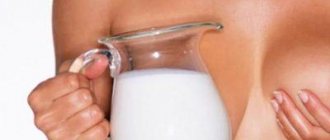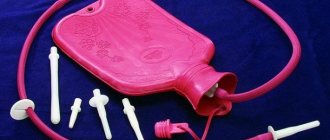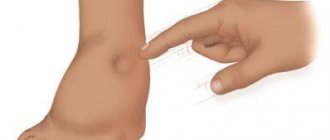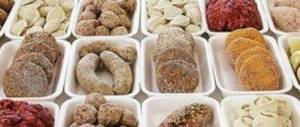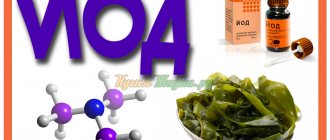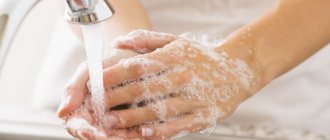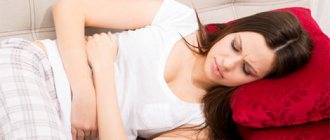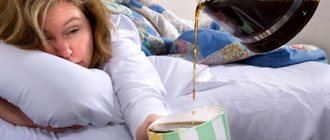Bile is a physiological medium of the body that takes part in the digestive process. The normal condition is that it enters the gallbladder and not the stomach. It is stored in it and, once prepared, takes part in digestion. Normally, its release should occur into the food bolus at the moment when the latter leaves the stomach and enters the duodenum. If there are disturbances in physiological processes, then bile will enter the stomach.
This leads to severe burns of the mucous membrane by bile acids. And when this substance comes into concentration with hydrochloric acid, the integrity of the gastric lining is threatened.
Unfortunately, it can enter the stomach even in a healthy person if:
- violation of diet;
- shaking after eating;
- sudden bending of the body or physical activity immediately after eating;
- sleeping on the left side with a full stomach;
- simultaneous consumption of large amounts of food and liquid.
Reasons for the release of bile into the stomach
The release of bile into the stomach can occur for various reasons. The root causes may be inflammatory diseases of the liver and gallbladder, disruptions in the patency of the bile ducts, a disorder of the compressive activity of the gastric sphincter, and disorders of the nervous system.
In addition, the release of bile into the stomach can be caused by poor nutrition and poor eating habits. Namely:
- lack of regular nutrition;
- systematic overeating;
- consuming foods that reduce the contractility of the gastric sphincter.
How is it derived?
First of all, when pathology appears, you need to consult a doctor who will help you competently and safely eliminate bile reflux.
Often, excess fluid is excreted in the urine through a course of drug therapy. Often, folk techniques based on the use of potions and decoctions of natural composition are added to traditional medicine to release bile naturally. Rinsing the common bile ducts can be done at home; hospitalization is not required for this procedure.
Symptoms of bile in the stomach
Sometimes the release of bile occurs in absolutely healthy people. When this phenomenon does not occur continuously, symptoms may not be observed. Obvious signs entail the development of gastroduodenal reflux. That is, the contents of the duodenum are thrown into the stomach.
The main symptoms when bile is in the stomach:
- dull, non-localized pain in the abdomen;
- frequent heartburn and belching;
- bitterness in the mouth;
- bloating;
- yellow coating on the surface of the tongue.
The listed signs indicate a permanent or temporary disruption of the biliary organs and that bile has entered the stomach. It is worth remembering that bile in the stomach is not a disease, it is only a signal that the main mechanism for removing bile is disrupted, which immediately requires qualified diagnosis and concomitant treatment.
Vegetable oils
A diet for bile stagnation involves daily consumption of vegetable fats. This promotes the production of bile in the required volume, normalizes the delivery of secretions into the lumen of the duodenum. Oils should be consumed in their pure form, since heat treatment leads to the breakdown of many beneficial substances. Gastroenterologists recommend including up to 100 g of choleretic products in the diet, while vegetable oils should account for up to 40%.
To normalize the functioning of hepatocytes and cleanse the liver, the oil should be taken in the morning, 5-10 ml, half an hour before meals. You can eat flax and pumpkin seeds as sources of fat and fiber. Doctors recommend using the following vegetable fats when preparing sauces and salad dressings:
- Corn;
- Sunflower;
- Peanut;
- Linen;
- Olive;
- Avocado oil.
Important! Experts advise giving preference to unrefined oils (linseed and olive), which are obtained by direct extraction.
Diet therapy for the treatment of bile in the stomach
In order to restore bile flow and the production of pancreatic secretions, in addition to the main treatment, it is necessary to adhere to the correct diet and diet. You should eat small portions six times a day. It is extremely important to exclude seasonings, alcohol, soda, smoked foods, fried and fatty foods. Avoid eating animal fats.
Folk remedies also require following a special diet. For example, the use of dietary bran, which stimulates intestinal motility. To stabilize intestinal cleansing, you should increase your consumption of fruits, dried fruits, vegetables and herbs.
Greens and vegetables
The basis of the menu for patients who have a history of various pathologies of the biliary system are herbal products. They help normalize the functioning of the digestive organs and help eliminate unpleasant symptoms. Doctors recommend eating raw vegetables and fruits, greens in the form of salads and freshly squeezed juices.
A diet for cholestasis involves consuming the following list of plant products:
- Tomatoes;
- Celery;
- Beet;
- Dill;
- Artichoke;
- Carrot;
- Various types of cabbage;
- Spinach;
- Rhubarb.
Important! The diet of a patient with gallbladder pathologies should consist of 50% vegetables.
Folk remedies for bile in the stomach
Of course, before you begin self-medication and use folk remedies, you must conduct a full examination and consult with a specialist about what can be done specifically in your case of the disease.
Basically, to expel bile from the stomach, remedies such as herbal infusions and blind probing are used. Try every day, instead of water, tea, coffee and other drinks you are used to, drink choleretic uzvar from hawthorn, cranberries, currants, rowan, raspberries, viburnum, lingonberries.
Blind probing involves the following procedure. First you need to drink 10-12 drops of wormwood tincture and eat it with half a teaspoon of natural honey. After 20 minutes, repeat and drink another 10-12 drops of wormwood tincture, only wash it down with a small amount of hot water. After this, place a heating pad in the liver area and heat it for about two hours. Then you need to take several tablets of activated carbon based on body weight, one tablet is needed for every 15 kg. The procedure takes four days. After a break of two weeks, blind probing can be repeated.
To expel bile in the stomach, folk remedies such as herbal decoctions are effective. Take a teaspoon each of plantain, immortelle, thyme and St. John's wort. Pour a liter of hot water over the herbs and boil for just one minute. Cool the herbal decoction and take it throughout the day in small portions.
It is very popular to use barberry root, dandelion root and chicory herb to get rid of bile in the stomach. Take the necessary components in equal proportions and pour boiling water over them. For two tablespoons of chopped herbs - one liter of boiling water. It is better to do this directly in a thermos. Then let it brew overnight, then take half a glass warm before meals. The course of use of such a remedy is two months followed by a week break.
When bile is in the stomach, a person suffers from unpleasant symptoms. An uzvar made from plantain, marshmallow rhizome, oregano, St. John's wort and caraway fruits will help alleviate the condition. An equal amount of ingredients must be poured with water and slowly brought to a boil. Drink a couple of spoons a day half an hour before meals. Another folk recipe is also effective. You will need St. John's wort, lemon balm, plantain, nettle and oregano in proportions 1:4:3:2:2. Boil the herbs over low heat and leave for a couple of hours, then take the same as the previous remedy.
Herbal treatments will give results if they are used systematically and without disrupting the diet. Naturally, with proper treatment, it is mandatory to stop smoking and drinking alcoholic beverages. Video
Choleretic drinks
Insufficient water consumption negatively affects the functioning of internal organs and systems and gradually leads to changes in the rheological characteristics of bile. The lack of sufficient fluid contributes to the development of congestion in the organs of the biliary system. Therefore, a diet for stagnation of bile in the gallbladder involves normalizing the water regime. To do this, you need to drink up to 2 liters of clean drinking water daily.
Before going to bed, you can take water with 1-2 drops of freshly squeezed lemon juice. This will help normalize body weight and effectively remove bile from the body.
Freshly squeezed juices from the following vegetables and fruits have a pronounced choleretic effect:
- Black radish;
- Cabbage;
- Jerusalem artichoke;
- Beet;
- Turnip;
- Horseradish;
- Grape.
Important! Tea with mint helps eliminate cramps and has a calming and choleretic effect.
Honey, 1 teaspoon of which should be diluted in warm water, will help normalize bile production. The honey drink should be taken before bed; it has a calming effect, helps normalize sleep, and has a pronounced choleretic effect. However, patients who have a history of cholelithiasis should refrain from drinking this type of drink.
Anna:
There were often problems with the intestines, any food led to poisoning. I tried a lot of things, but there was no result.
I decided to try the teas. The monastery collection of Father George began to help me well.
How to remove bile from the gallbladder? You can buy ready-made preparations at the pharmacy. They contain beneficial herbs that normalize the functioning of the bladder and promote the outflow of liquid contents.
What to do if your gallbladder has been removed? The function of removing bile is distributed evenly to all organs of the digestive tract. Doctors will tell you which cleansing methods can be used if necessary.
Dietary recommendations
A proper diet serves both as a way to eliminate symptoms and as an excellent prevention of the disease.
- Eliminate products that enhance secretion.
- Drink enough water, but do not wash down your food in the process.
- The dish should be warm, and in no case hot or cold, so as not to irritate the mucous membranes.
- It is better to boil or steam.
- Eating small meals frequently.
Products should be selected based on standard rules of healthy eating (nothing fatty, spicy, sweet, etc.)
Pathology requires mandatory and thorough diagnosis. Timely seeking medical help, further compliance with the treatment plan and the recommendations of the attending physician will help you recover quickly, and if a complete cure is not possible, then reduce the manifestation of symptoms and improve the patient’s quality of life.
Indications for bile excretion
In order to determine whether any measures need to be taken to eliminate bile stagnation and whether there are acute indications for this, the patient must first consult a doctor. The doctor will most likely order the following tests.
- Laboratory blood test - it will show whether there is an inflammatory process involved.
- Urine and stool analysis.
- Ultrasound of the abdominal cavity - allows you to determine the size of the liver, the structure of the storage bladder and evaluate how bile is removed from the body, whether there are signs of stagnation, stones, sand and neoplasms.
- Cholecystography is done if acute cholecystitis is suspected.
- Fibrogastroduodenography (FGDS) - for examining the stomach and duodenum.
Assessing the indications for removing bile also includes collecting anamnesis, identifying pronounced signs of stagnation and the presence of chronic diseases of the gastrointestinal tract, liver and gall bladder. Such pathologies may be:
- chronic gastritis;
- gastroesophageal reflux disease (GERD);
- constipation accompanied by dysfunction of bile outflow;
- cholangitis, cholecystitis;
- biliary dyskinesia;
- atony of the gallbladder, combined with dyskinesia.
Symptoms of stagnation
The first signs of bile stagnation in the body can manifest themselves in different ways, depending on the severity of the violations that have occurred. In the initial stage of cholestasis, a person feels nagging pain and heaviness on the right side, below the ribs. Nausea with a strong urge to vomit, belching with bitterness and a change in the taste perception of food occur periodically. The patient notes the appearance of bad breath, decreased or lack of appetite, urine becomes darker, and feces, on the contrary, turn light in color. Laboratory and ultrasound studies document the development of hypovitaminosis and a slight increase in liver size.
At a late stage, stagnation of bile can manifest itself as changes in the skin - itching with elements of peeling and jaundice occurs. Doctors associate this phenomenon with the retention of excess bile acid in epithelial tissues and irritation of nerve endings. In the absence of proper treatment for a long time at this stage of cholestasis, complications follow in the form of the formation of stones in the cavity of the bile ducts and storage bladder. These consequences, in turn, can cause the addition of a bacterial infection and the development of cholangitis - inflammation of the bile ducts. With prolonged cholestasis, cases of liver dysfunction and the formation of liver failure are not uncommon.

